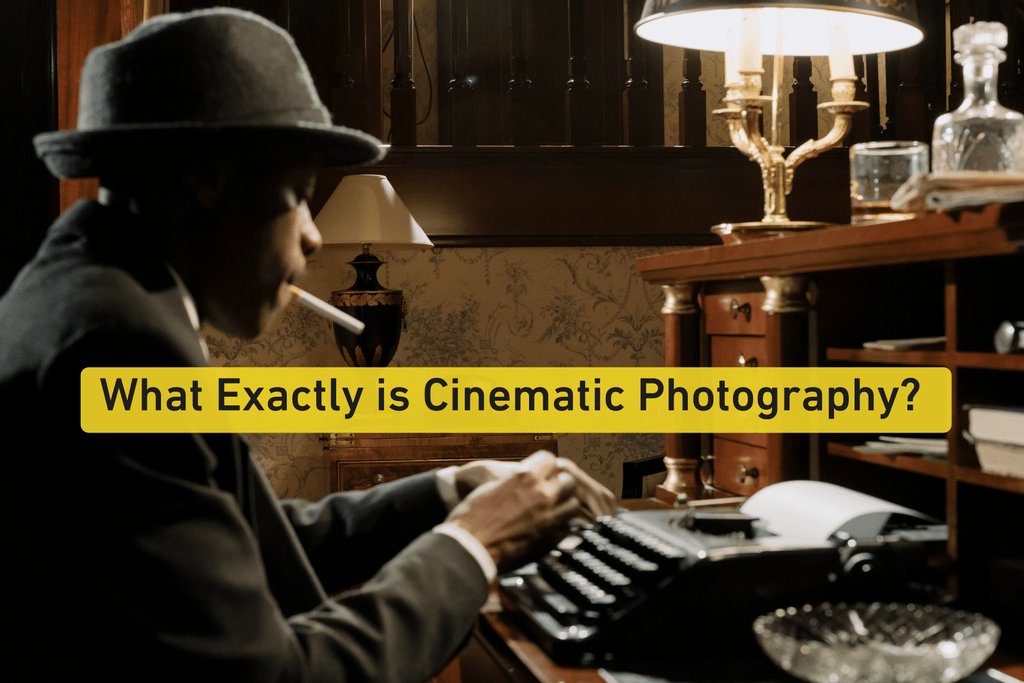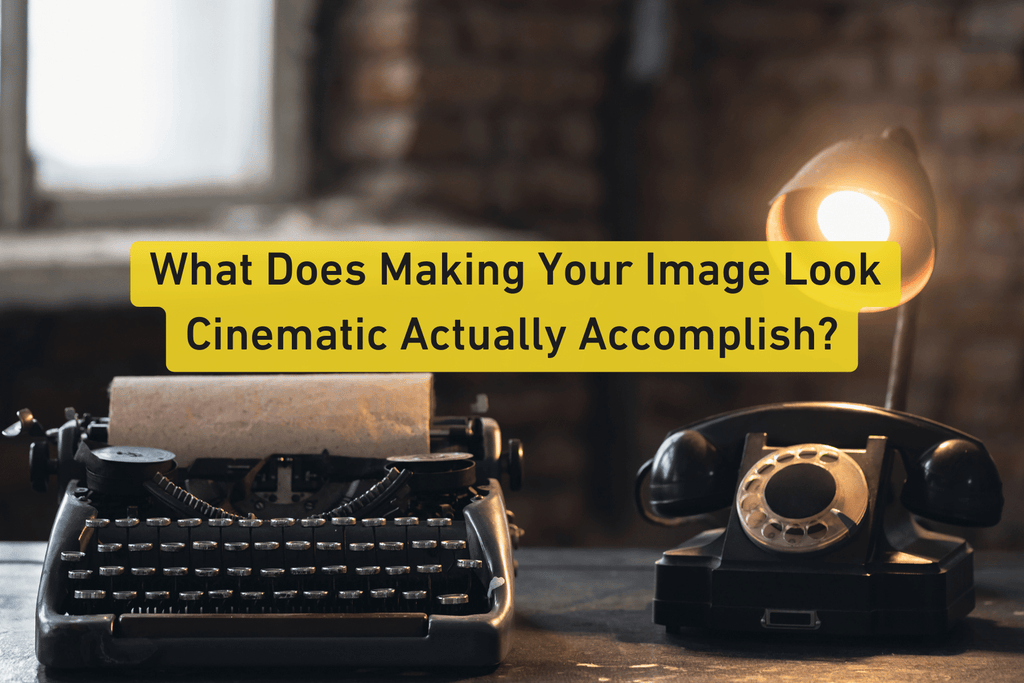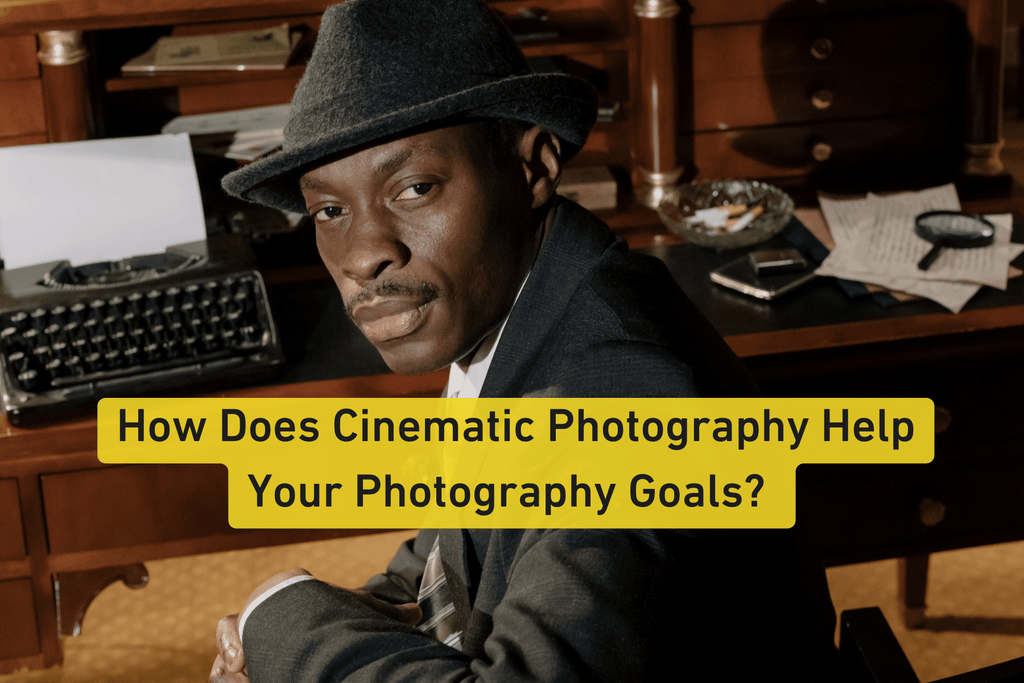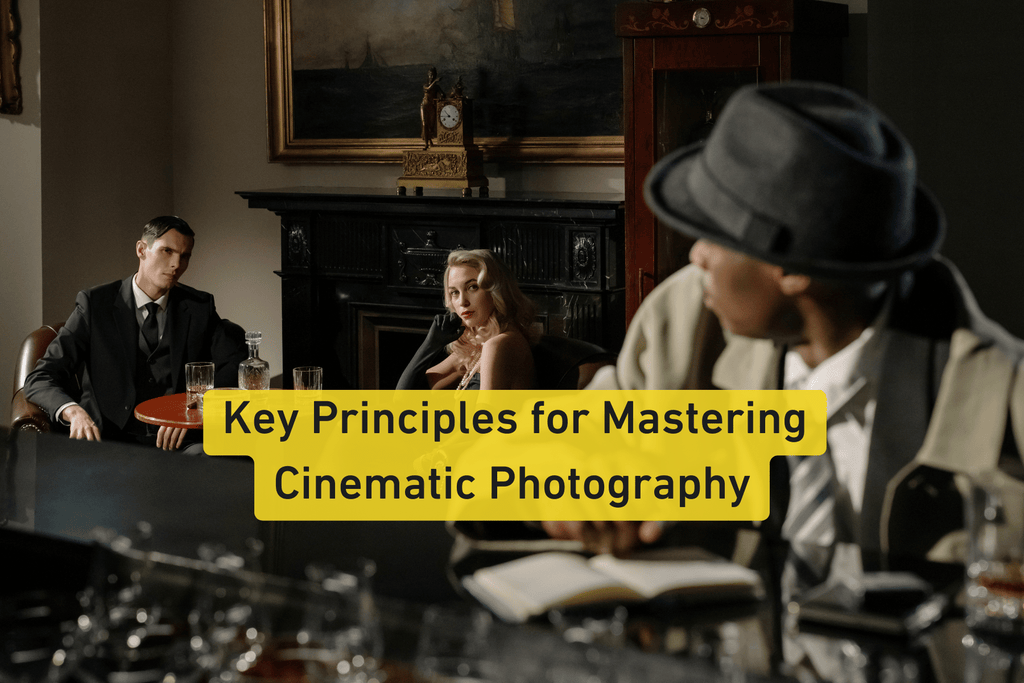Want to make your pictures look like a Hollywood film? Well, come on in and read this blog! Movies mesmerize by their epic and stunning visuals. Every scene tells a story, not only through the script and the actors but also through the visuals! Imagine it, being able to capture that same feeling in a single, beautiful photograph – it's possible.
They say there's such a thing as "movie magic," and the fantastic magic extends to cinematic photography. Let's talk about how you can take a photograph, like plucking a single frame from a movie.

What Exactly is Cinematic Photography?
Let's break it down in much simpler terms.
Cinematic photography is a way of seeing pictures and thinking about photography. Still, it is also a way of executing the taking of a photo via a special and unique style. These types of photographs aim to emulate the looks, feelings, and vibe of a big-screen movie. Like motion pictures, cinematic photos can establish a mood or atmosphere. You do this through careful & thoughtful composition, "cinematic" lighting, and (sometimes) effect-heavy editing.
Cinematic photography is a way of executing the taking of a photo via a special and unique style that aims to emulate the looks, feelings, and vibe of a big-screen movie.

What Defines Cinematic Photography?
Like anything, different photographers/filmmakers will have slightly different definitions of what cinematic photography actually means/what the criteria are… but everyone agrees on one major thing: it's all about putting 'story' first and pulling emotions out of your photo viewers.
For some people, cinematic photography might mean using wide-angle lenses or dramatic lighting to create a certain stylistic flair that can be described as epic – especially for their landscapes or cityscapes. For other movie-minded craftspeople, making their pictures cinematic might mean capturing candid moments between regular people. Like genres of film, different attributes attract different creative instincts.

How Does Cinematic Photography Work?
So, what must you do to create a cinematic image? It begins with what you want to say or your vision for the project. Plain & simple, take the time to think about the story you like to tell with your photo. What is "behind" the subjects in your image. What do they mean to you, and how do you think they can be interpreted by the person (or people) looking at your photo? All this will come into play. As mentioned above, cinematic photography is more a viewpoint than a practical technique. Putting things into a cinematic context usually taps into a state of mind.
Once you've got your vision down pat, it's time to build the world or, to use a theater term, set the stage. Pay close attention to the lighting (the most crucial element of most photo/video/cinema endeavors) and the composition of your shot in a way that taps into the psychology of the moment you're looking to capture. Use natural light when available, and if you're going for more realism (every day in modern cinema). Then, experiment with different angles and perspectives to find a personal way of framing the world. You want to focus on the drama and excitement of each moment.
Related article: How to Use Natural Light?
Editing can also play an essential role in cinematic photography, as movies will show you. The editing phase is a massive part of the process because so much of what you're doing on set is data retention (trying to get the highest quality out of your baseline image as possible). Try out various editing software to play with the colors and contrast. These things will change and/or enhance the mood of your photos, giving them that "cinematic" look we're all craving.

What Does Making Your Image Look Cinematic Actually Accomplish?
Ultimately, making a picture into a cinematic photograph means you've infused it with enough thoughtfulness and design that it doesn't look like a regular, everyday snapshot. It is no longer a random cell phone pic but a work of art. By focusing on storytelling elements and the emotions you're playing with, like a conductor with a set of talented musicians, you can tap into something grander than the average photo, creating images that hit people on deeper levels than their eyeballs.
Related article: 8 Tips for Better Visual Storytelling
Suppose you're just starting out, and pictures are your hobby; maybe you're just looking to improve your skills or a high-demand professional picture-taker looking to beef up your presence in the movie world. In that case, cinematic photography and thinking like a filmmaker from behind the camera lens can bring you closer to your goals in this field.

How Does Cinematic Photography Help Your Photography Goals?
Cinematic photography illustrates that you're more than just a person with a sharp eye or a creative opportunist with a fast finger. Giving your pictures some creative design qualities and revealing that, first and foremost, you're a storyteller will draw people from many different fields and make your work stand out.

Key Principles for Mastering Cinematic Photography.
When it comes to cinematic photography, try to keep these critical elements in mind:
Always Tell a Story
Every picture should be considered the seed for an entire movie. They should have a clear, easy-to-follow narrative or emotional arc for people to follow, with entertainment at the forefront and sophisticated thematic concepts buried beneath. Think about what story you want to tell with your photo, and use composition, lighting, and editing to bring that story to life.
Avoid Clichés
While cinematic photography often uses similar attributes (dramatic lighting, moody darkness in landscapes and cityscapes, etc.), try to avoid doing the same old thing we've all seen a million times. Look for unique subjects and backgrounds, locations, and lighting situations… And ALWAYS make the story you're telling the boss. You will often make more organic choices if you do what's best for the story you want to speak.
Experiment With Different Techniques
Like real movies, each situation and story is different and often requires different methods to pull out the moment's most significant creative potential. So don't be afraid to try other things. Not to sound too repetitive, but if you let your story be your guide, you're often free to come up with unique and original ways of solving problems simply because the demands of the story you're telling push you into new territories of thought and expression.

Conclusion
In conclusion, cinematic photography doesn't have a definition or set of rules you can always fall back on. It is a mindset, a way of seeing the world and training your mind to see the narrative potential in every image you take. Redefine yourself as a storyteller; your gear is simply a tool, an extension of your mind. All you need is a camera and a lens and some beautiful light. The rest is the poetry you wish to recite to us all. Cheesy? A bit. But true. Get out there, Tarantino.
Related article: How to Make Videos in the Style of Wes Anderson
Related article: How to Tell a Story with Your Photos
Related article: 8 Tips for Better Visual Storytelling
Related article: Capturing Motion: A Guide to Achieving Stunning Motion Blur
Related article: The Importance of Creating a Shotlist
Related article: How to Use Leading Lines in Photography?












